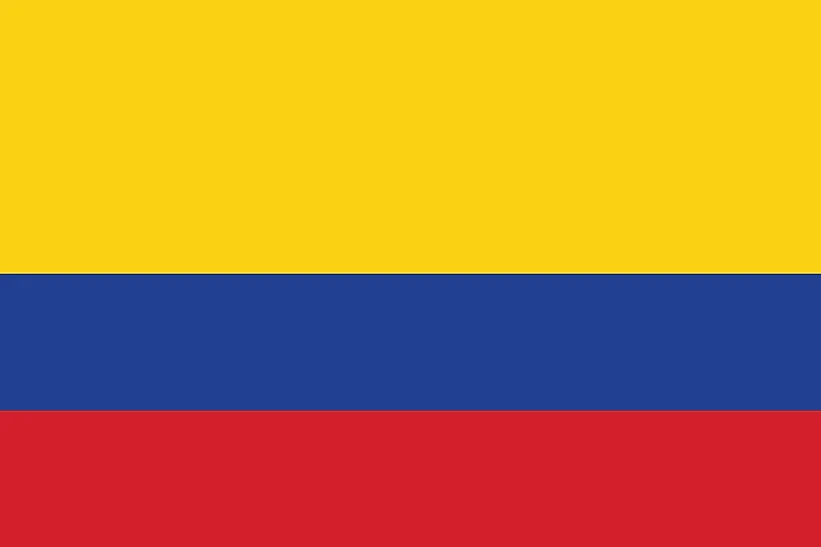
Colombia
| Continent | Americas |
| Capital | Bogota |
| Population | 47,220,856 |
| GDP | $688.00 Billion |
| GDP per Capita | $14,100 |
| Dialing Code | +57 |
| ISO Code (2-letter) | CO |
| ISO Code (3-letter) | COL |
Colombia Landscapes






About Colombia
Welcome to Colombia, a nation where the Andes meet the Caribbean and Pacific coasts, creating one of the world’s most biodiverse countries. With approximately 51 million people occupying 1.14 million square kilometers, Colombia combines extraordinary natural beauty with rich cultural heritage and a spirit of innovation. From its coffee regions to its colonial cities, from its Amazon rainforest to its modern urban centers, Colombia offers a remarkable blend of experiences.
Geographic Features and Natural Beauty
Colombia’s geography is characterized by remarkable diversity, encompassing five major natural regions: the Andes Mountains, the Pacific coastal region, the Caribbean coast, the Llanos (plains), and the Amazon rainforest. This variety creates one of the world’s highest levels of biodiversity, with more bird species than any other country.
The country features three Andean cordilleras (mountain ranges), creating diverse climatic zones and ecosystems. The Sierra Nevada de Santa Marta, the world’s highest coastal mountain range, rises dramatically from the Caribbean coast to snow-capped peaks.
The Coffee Cultural Landscape, a UNESCO World Heritage site, showcases the country’s famous coffee-growing region with its distinctive architecture and agricultural traditions. The Amazon rainforest region preserves vast stretches of pristine jungle, while the Pacific coast features some of South America’s most diverse marine ecosystems.
Cultural Heritage and Traditions
Colombian culture reflects a vibrant mix of indigenous, European, and African influences. This diversity is expressed through music and dance, with styles including cumbia, vallenato, and salsa becoming internationally recognized. The country’s carnival celebrations, particularly the Barranquilla Carnival, showcase this rich cultural fusion.
Traditional crafts include the famous Wayuu mochila bags, filigree jewelry from Mompox, and the distinctive vueltiao hat. Colombian cuisine varies by region but commonly features arepas, bandeja paisa, and an extraordinary variety of tropical fruits.
Literature plays a special role in Colombian culture, with Gabriel García Márquez’s magical realism capturing global imagination. The country’s artistic traditions continue to evolve, embracing both traditional forms and contemporary expressions.
Historical Journey
Colombia’s history spans from ancient indigenous civilizations through Spanish colonization to independence. The country was home to sophisticated pre-Columbian cultures, including the Muisca and Tairona, who left behind remarkable archaeological sites.
After gaining independence from Spain in 1819, Colombia experienced various periods of conflict and development. Recent decades have seen significant progress in peace-building and economic development, transforming the country’s image and prospects.
Modern Economic Landscape
Today’s Colombia has one of Latin America’s largest economies, based on diverse sectors including services, manufacturing, agriculture, and energy. The country is famous for its coffee production but has also developed strong technology, tourism, and creative industries.
Medellín’s transformation from a troubled city to an innovation hub exemplifies Colombia’s potential for positive change. The country has made significant strides in infrastructure development, education, and digital connectivity.
International Relations and Global Position
Colombia maintains active participation in various international organizations and is a key ally in regional affairs. The country is a member of the Pacific Alliance and has strong relationships with both North and South American nations.
Did You Know?
• Colombia is the only South American country with coastlines on both the Pacific Ocean and Caribbean Sea?
• The country has more bird species than any other nation, with over 1,900 species identified?
• Colombian emeralds are considered among the finest in the world?
• The Cocora Valley is home to the world’s tallest palm trees, the wax palms?
Conclusion
Colombia represents a remarkable story of transformation and resilience. From its biodiversity-rich landscapes to its vibrant urban culture, from its traditional coffee farms to its modern innovation centers, Colombia continues to evolve while maintaining its unique cultural identity. As it addresses ongoing challenges and opportunities, Colombia remains committed to sustainable development and showcasing its extraordinary potential to the world.